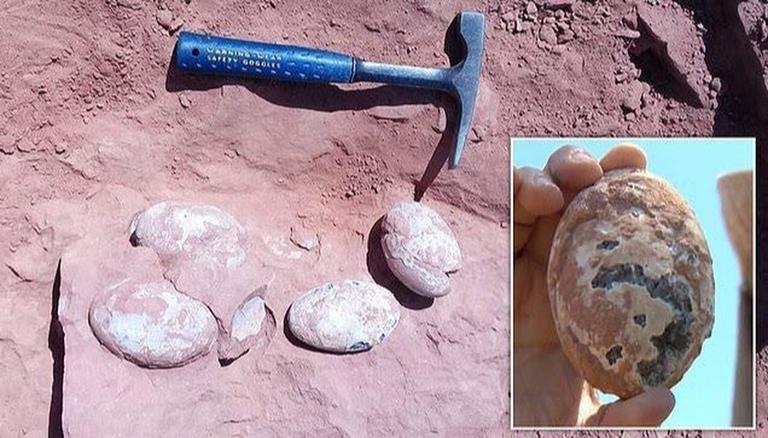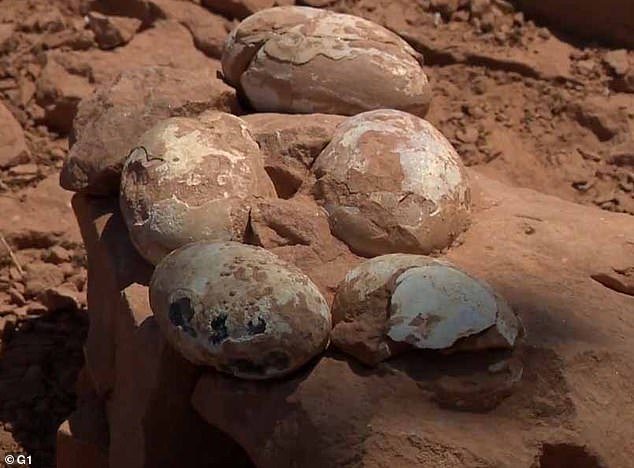The eggs have a thick shell and were too large to be that of crocodiles and thus belong to carnivorous dinosaurs, said lead researcher William Roberto Nava.
Written By Harsh Vardhan
Palaeontologists, who discovered a nest of five eggs that got buried in loose sediment some 60 to 80 million years ago, have finally confirmed the origins of the fossils. Discovered by a research team in Brazil last year, the fossilized eggs were initially believed to have belonged to crocodiles, however, a deeper study has shed a different light. According to lead researcher William Roberto Nava, the eggs have a thick shell and were too large to be that of crocodiles and confirmed that the eggs belong to carnivorous dinosaurs.
The expert from the Paleontological Museum in Marilia also revealed that the eggs of dinosaurs and crocodiles also differ in size as the former measure four to five inches long and two to three inches wide whereas the latter measure no longer than three inches. Moreover, he said that a porous or smooth texture is a characteristic associated with the eggs of prehistoric crocodiles also called 'crocodylomorph' whereas the egg-shells of dinosaurs have a 'ripple-shaped' texture.
"The eggs are a little bigger than those of crocodylomorph. So we're associating these larger eggs, which are five, with some kind of theropod dinosaur, that is, a carnivorous dinosaur that lived at this point and used it millions of years ago to lay these eggs", Nava said in an interview with g1.
How were the eggs preserved for so long?
Unearthed in Presidente Prudente city of Brazil's São Paulo, the transformation of soil into sandstone over time had a big role in preserving the eggs. Over a course of millions of years, the eggs got covered with layers of sand which turned into sandstone allowing the egg to withstand the test of time." Who knows if in one of these [five] eggs we have a fossilized embryo. It would be super cool, it would be something new for Brazil", Nava was quoted as saying by g1.








